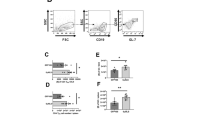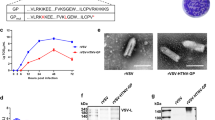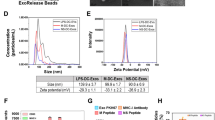Abstract
Safe and effective vaccines are crucial for maintaining public health and reducing the global burden of infectious disease. Here we introduce a new vaccine platform that uses hydrogen peroxide (H2O2) to inactivate viruses for vaccine production. H2O2 rapidly inactivates both RNA and DNA viruses with minimal damage to antigenic structure or immunogenicity and is a highly effective method when compared with conventional vaccine inactivation approaches such as formaldehyde or β-propiolactone. Mice immunized with H2O2-inactivated lymphocytic choriomeningitis virus (LCMV) generated cytolytic, multifunctional virus-specific CD8+ T cells that conferred protection against chronic LCMV infection. Likewise, mice vaccinated with H2O2-inactivated vaccinia virus or H2O2-inactivated West Nile virus showed high virus-specific neutralizing antibody titers and were fully protected against lethal challenge. Together, these studies demonstrate that H2O2-based vaccines are highly immunogenic, provide protection against a range of viral pathogens in mice and represent a promising new approach to future vaccine development.
This is a preview of subscription content, access via your institution
Access options
Subscribe to this journal
Receive 12 print issues and online access
$259.00 per year
only $21.58 per issue
Buy this article
- Purchase on SpringerLink
- Instant access to full article PDF
Prices may be subject to local taxes which are calculated during checkout




Similar content being viewed by others
References
Plotkin, S.L. & Plotkin, S.A. A short history of vaccination. in Vaccines (eds. Plotkin, S.A., Orenstein, W.A. & Offit, P.A.) 1–16 (Saunders/Elsevier, Philadelphia, 2008).
Logrippo, G.A. & Hartman, F.W. Antigenicity of β-propiolactone–inactivated virus vaccines. J. Immunol. 75, 123–128 (1955).
Brown, F. Review of accidents caused by incomplete inactivation of viruses. Dev. Biol. Stand. 81, 103–107 (1993).
Kim, H.W. et al. Respiratory syncytial virus disease in infants despite prior administration of antigenic inactivated vaccine. Am. J. Epidemiol. 89, 422–434 (1969).
Delgado, M.F. et al. Lack of antibody affinity maturation due to poor Toll-like receptor stimulation leads to enhanced respiratory syncytial virus disease. Nat. Med. 15, 34–41 (2009).
Annunziato, D. et al. Atypical measles syndrome: pathologic and serologic findings. Pediatrics 70, 203–209 (1982).
Stauffer, F., El-Bacha, T. & Da Poian, A.T. Advances in the development of inactivated virus vaccines. Recent Pat. Antiinfect. Drug Disc. 1, 291–296 (2006).
Swanson, M.C. et al. IgE and IgG antibodies to β-propiolactone and human serum albumin associated with urticarial reactions to rabies vaccine. J. Infect. Dis. 155, 909–913 (1987).
Monath, T.P. et al. An inactivated cell-culture vaccine against yellow fever. N. Engl. J. Med. 364, 1326–1333 (2011).
Guenter, T.E. Hydrogen peroxide. in Encyclopedia of Chemical Processing and Design, Vol. 27 (ed. McKetta, J.J.) 27–43 (Marcel Dekker, New York, 1988).
Sykes, G. The theory and mode of action of disinfection. in Disinfection and Sterilization, Ch. 2 (Lippincott, Philadelphia, 1965).
Valko, M. et al. Free radicals and antioxidants in normal physiological functions and human disease. Int. J. Biochem. Cell Biol. 39, 44–84 (2007).
Siber, G.R. et al. Safety and immunogenicity of hydrogen peroxide-inactivated pertussis toxoid in 18-month-old children. Vaccine 9, 735–740 (1991).
Termini, J. Hydroperoxide-induced DNA damage and mutations. Mutat. Res. 450, 107–124 (2000).
Fiore, A.E., Finestone, S.M. & Bell, B.P. Hepatitis A vaccine. in Vaccines (eds. Plotkin, S.A., Orenstein, W.A. & Offit, P.A.) 177–203 (Saunders/Elsevier, Philadelphia, 2008).
Plotkin, S.A. & Vidor, E. Poliovirus vaccine—inactivated. in Vaccines (eds. Plotkin, S.A., Orenstein, W.A. & Offit, P.A.) 605–630 (Saunders/Elsevier, Phildelphia, 2008).
Srivastava, A.K. et al. A purified inactivated Japanese encephalitis virus vaccine made in Vero cells. Vaccine 19, 4557–4565 (2001).
Monath, T.P. et al. Inactivated yellow fever 17D vaccine: development and nonclinical safety, immunogenicity and protective activity. Vaccine 28, 3827–3840 (2010).
Robinson, H.L. & Amara, R.R. T cell vaccines for microbial infections. Nat. Med. 11, S25–S32 (2005).
Lau, L.L., Jamieson, B.D., Somasundaram, T. & Ahmed, R. Cytotoxic T-cell memory without antigen. Nature 369, 648–652 (1994).
Hassett, D.E., Slifka, M.K., Zhang, J. & Whitton, J.L. Direct ex vivo kinetic and phenotypic analyses of CD8+ T cell responses induced by DNA immunization. J. Virol. 74, 8286–8291 (2000).
Schwarz, K. et al. Efficient homologous prime-boost strategies for T cell vaccination based on virus-like particles. Eur. J. Immunol. 35, 816–821 (2005).
Slifka, M.K. et al. Antiviral cytotoxic T-cell memory by vaccination with recombinant Listeria monocytogenes. J. Virol. 70, 2902–2910 (1996).
Plotkin, S.A. Correlates of protection induced by vaccination. Clin. Vaccine Immunol. 17, 1055–1065 (2010).
Amanna, I.J., Messaoudi, I. & Slifka, M.K. Protective immunity following vaccination: how is it defined? Hum. Vaccin. 4, 316–319 (2008).
Edghill-Smith, Y. et al. Smallpox vaccine–induced antibodies are necessary and sufficient for protection against monkeypox virus. Nat. Med. 11, 740–747 (2005).
Eckels, K.H. & Putnak, R. Formalin-inactivated whole virus and recombinant subunit flavivirus vaccines. Adv. Virus Res. 61, 395–418 (2003).
Amanna, I.J. & Slifka, M.K. Wanted, dead or alive: new viral vaccines. Antiviral Res. 84, 119–130 (2009).
Ng, T. et al. Equine vaccine for West Nile virus. Dev. Biol. (Basel) 114, 221–227 (2003).
Shrestha, B., Ng, T., Chu, H.J., Noll, M. & Diamond, M.S. The relative contribution of antibody and CD8+ T cells to vaccine immunity against West Nile encephalitis virus. Vaccine 26, 2020–2033 (2008).
Giannini, S.L. et al. Enhanced humoral and memory B cellular immunity using HPV16/18 L1 VLP vaccine formulated with the MPL/aluminium salt combination (AS04) compared to aluminium salt only. Vaccine 24, 5937–5949 (2006).
Neighbor, N.K. et al. The effect of microaerosolized hydrogen peroxide on bacterial and viral poultry pathogens. Poult. Sci. 73, 1511–1516 (1994).
Channon, J.Y. & Blackwell, J.M. A study of the sensitivity of Leishmania donovani promastigotes and amastigotes to hydrogen peroxide. I. Differences in sensitivity correlate with parasite-mediated removal of hydrogen peroxide. Parasitology 91, 197–206 (1985).
DeQueiroz, G.A. & Day, D.F. Disinfection of Bacillus subtilis spore-contaminated surface materials with a sodium hypochlorite and a hydrogen peroxide-based sanitizer. Lett. Appl. Microbiol. 46, 176–180 (2008).
Gujral, I.B., Zielinski-Gutierrez, E.C., LeBailly, A. & Nasci, R. Behavioral risks for West Nile virus disease, northern Colorado, 2003. Emerg. Infect. Dis. 13, 419–425 (2007).
Hammarlund, E. et al. Duration of antiviral immunity after smallpox vaccination. Nat. Med. 9, 1131–1137 (2003).
Reed, L.J. & Muench, H. A simple method of estimating fifty percent endpoints. Am. J. Hyg. 27, 493–497 (1938).
Raué, H.P. & Slifka, M.K. Pivotal Advance: CTLA-4+ T cells exhibit normal antiviral functions during acute viral infection. J. Leukoc. Biol. 81, 1165–1175 (2007).
Barber, D.L., Wherry, E.J. & Ahmed, R. Cutting edge: rapid in vivo killing by memory CD8 T cells. J. Immunol. 171, 27–31 (2003).
Hammarlund, E. et al. Monkeypox virus evades antiviral CD4+ and CD8+ T cell responses by suppressing cognate T cell activation. Proc. Natl. Acad. Sci. USA 105, 14567–14572 (2008).
Acknowledgements
We thank E. Poore and M. Dubois for the growth of YFV and E. Hammarlund for the growth of monkeypox virus. This work was supported by US National Institutes of Health grants R56 AI076506 (to M.K.S.), UO1 AI082196 (to M.K.S.) and R43 AI079898 (to I.J.A. and M.K.S.) and Oregon National Primate Research Center grant 8P51 OD011092-53 (to M.K.S.).
Author information
Authors and Affiliations
Contributions
M.K.S. conceived of the project. H.-P.R. performed the in vivo experiments, data analysis and figure preparation for the LCMV studies. I.J.A. performed the experiments, data analysis and figure preparation for the VV, YFV and WNV studies. I.J.A., H.-P.R. and M.K.S. wrote the manuscript, discussed the results and reviewed the manuscript before submission.
Corresponding author
Ethics declarations
Competing interests
Oregon Health & Science University, M.K.S. and I.J.A. have a financial interest in Najít Technologies, a company that may have a commercial interest in the results of this research and technology. This potential individual and institutional conflict of interest has been reviewed and managed by Oregon Health & Science University and the Integrity Program Oversight Council.
Rights and permissions
About this article
Cite this article
Amanna, I., Raué, HP. & Slifka, M. Development of a new hydrogen peroxide–based vaccine platform. Nat Med 18, 974–979 (2012). https://doi.org/10.1038/nm.2763
Received:
Accepted:
Published:
Issue date:
DOI: https://doi.org/10.1038/nm.2763
This article is cited by
-
Efficacy of H2O2 inactivated bovine virus diarrhoea virus (BVDV) type 1 vaccine in mice
BMC Veterinary Research (2024)
-
Contribution of SOS genes to H2O2-induced apoptosis-like death in Escherichia coli
Current Genetics (2021)
-
Preparation of the inactivated Newcastle disease vaccine by plasma activated water and evaluation of its protection efficacy
Applied Microbiology and Biotechnology (2020)
-
Integrated pipeline for the accelerated discovery of antiviral antibody therapeutics
Nature Biomedical Engineering (2020)
-
Ebola and Marburg virus vaccines
Virus Genes (2017)



